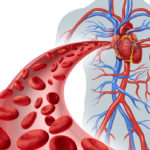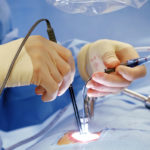
What Is Coronary Artery Bypass Grafting?
Coronary Artery Bypass grafting surgery involves opening the chest impermanent govern the blood through a heart-lung machine, which takes care of circulation during the heart is cooled, stopped, and repaired. Blockages in the coronary arteries are bypassed by collecting a blood vessel from elsewhere in the body and patching it against the coronary artery so as to reroute the blood flow around the blockage. A single time the repair is complete, the heart is warmed and restarted, and the chest is closed.
An order to fix different heart problems of a patient, medical science has come up with numerous types of heart surgeries. Below is the brief description of these heart surgeries:
In such type of coronary artery disease, a fatty material referred to as ‘Plaque’ gets accumulated inside the coronary arteries of a patient, which then blocks the arteries and reduces the flow of blood in the heart muscle.
In this type of heart surgery, a surgeon usually takes an artery or a vein from the leg, chest or any other body part of a patient. He then grafts or connects them (veins /arteries) with the blocked artery. With this, the CABG helps to bypass the blockage. In one surgery, the surgeon can bypass the maximum of four blocked coronary arteries.
It is one of the most common types of heart surgeries. CABG is usually borne on a person with a deliberate coronary artery disease.
Ways to treat coronary heart disease
- One of the most adequate ways of treating coronary artery disease is with medication. Chest pain due can be successively treated with nitrates and calcium channel blockers.
- When medication cannot treat coronary artery disease, doctors implement more tests to see how harsh the disease is. As a rule tests like stress Thallium scintigraphy, echocardiogram and coronary angiogram are meeting to check the severity of the disease.
- If the disease induces one or two arteries but is limited in nature, doctors will implement an angioplasty. This is a non-surgical agenda which involves using a medical balloon to open the hamper arteries.
Some surgeons simply are not capable in cases that they do not occasionally do on a weekly or monthly basis. Examples of some of these cases are: reoperations, combination reoperations and concomitant valve surgery, myectomy for IHSS, and primary CABG.
Reasons a surgeon may not be surgically skilful in agenda that are more difficult are the lack of volume of cases and type of cases that a surgeon does in a year’s time, as well the ancillary resources. Smaller hospitals tend to do very healthy first time surgeries with practically no other serious disease factors and/or processes in play.



